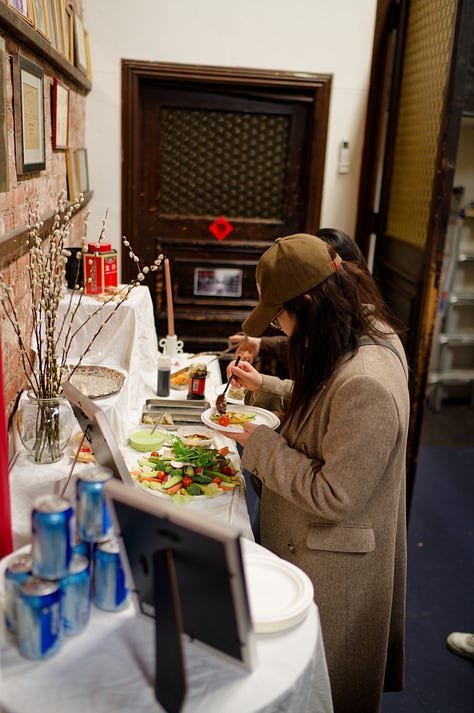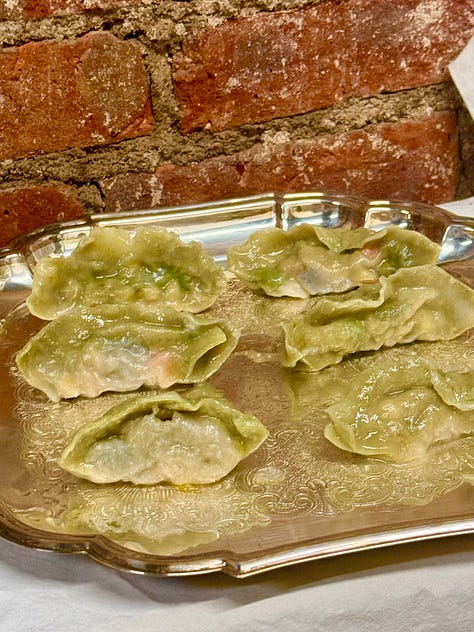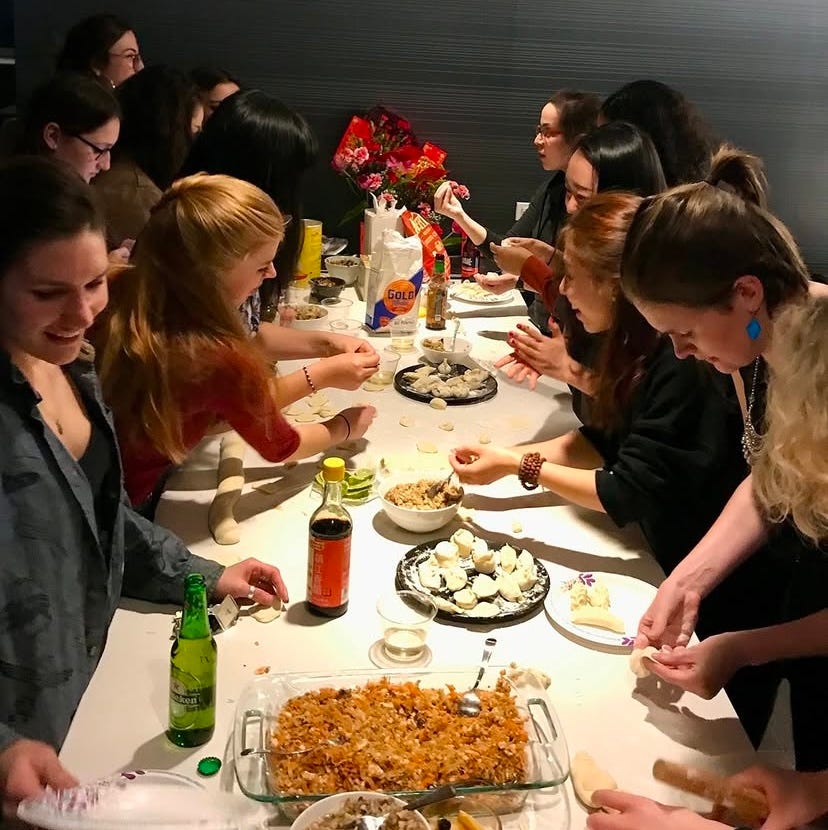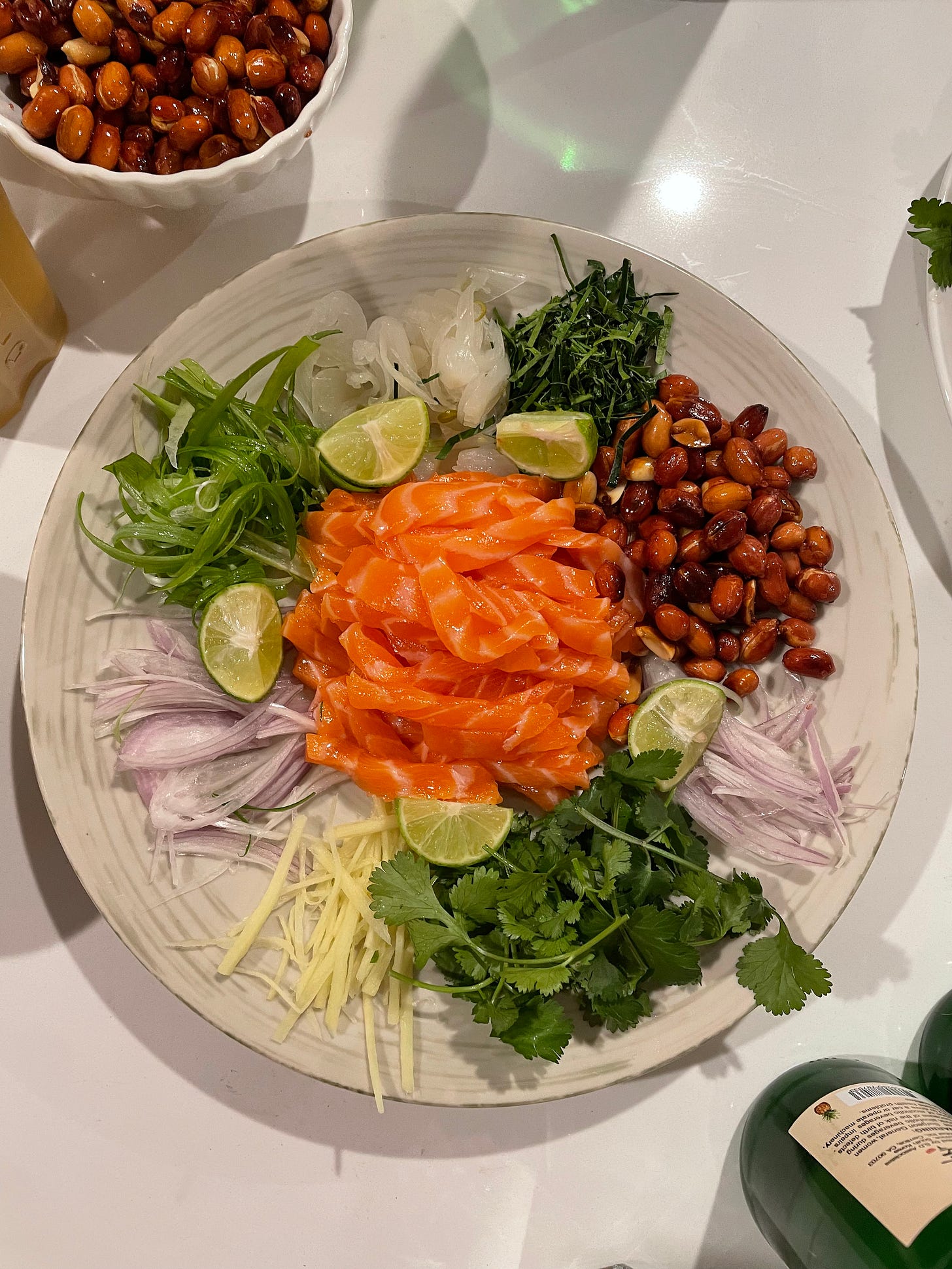🐍 Thinking Fast and Ssslow
Less than a month in and already so much to think about
Having to re-introduce myself (almost) every time I write another edition of the newsletter is so exciting because it means the Rooted Eats community is ✨growing✨
This time, there are a lot more of you who’ve found us through a recommendation from our friend, 4th world oasis 🤍 While we here at Rooted Eats can’t read the stars to make sense of what the hell is going on in U.S. politics for you, we’re also on a mission to better understand the world and society we live in — through the food we eat everyday.
For our new subscribers, hi, my name is Britney 👋 and I’m the main newsletter writer for Rooted Eats 🌱 (please excuse how many commas and em-dashes I use, okay?)
My friend Sarah started Rooted Eats a little over a year ago to channel her passion for being a chef. From Coachella and celebrity kitchens, to non-profits and local events, Sarah has spent years sharing her love of cooking and connecting with people.
We’re a podcast 🎧 and NYC-based event series exploring the cultural and environmental roots of food through conversations with chefs, farmers, and other people involved in shaping the way we eat. So far, we’ve produced episodes on 🍫 single-origin chocolate and its impact on local biomes, 🥭 the mango’s role in China’s Cultural Revolution, 👨🍳 Chef Charles X Michel’s vision of a humane food future, and conversations with food filmmakers featured at the international Ceres Food Film Festival.
You’ve joined us at the perfect time, because today’s newsletter is focused on welcoming the Year of the Snake — the sixth of the twelve Chinese zodiacs.
TOMORROW we’re co-hosting a Lunar New Year party with our friends at Greenpoint’s acclaimed Taiwanese restaurant, Wenwen, to start off the new year 🐍
We’ve designed a 3-hour experience where Sarah will lead dumpling-making with homemade fillings (vegetarian and pescetarian friendly, of course!), while professional calligraphers teach guests how to create traditional Lunar New Year home decor. If you’d like to learn more and join us, click the button below 😉🤞
Now, onto what I was getting at with the title of today’s newsletter — which has nothing to do with the Daniel Kahneman book, although, I didn’t read it, so maybe it does?
🧧 Not superstitious, but a little stitious…
I said in the previous newsletter that I’ve never made a New Year’s resolution because 1) I know I won’t keep it and 2) I will hate myself for not being able to keep it
This fear of failure and effortless ability to self-loath is rooted in the same thing that explains why I’m pretty superstitious…
But only in recent years have I really turned to the stars (through astrology columns and friends who can read the charts) to explain experiences beyond my earthly comprehension.
In 2023, I had one of the worst years of my life. I got laid off from a job I was deeply unhappy in (like, how dare you dump me first?), then weeks later left deeply disappointed by what I had hoped would be my Before, Sunrise romance half-way across the world. That was also the Year of the Rabbit — my year, as a 1999 baby.
When I explained it all to Sarah, she told me it was probably because I didn’t wear red on that Lunar New Year (and other reasons, of course). Do you see how that worked out? Yeah. So now I really care.
I especially care this year, because according to the South China Morning Post’s Year of the Snake reading for rabbits, this year is supposed to be lucky for us. Here’s what SCMP said:
“Rabbits will experience a significant rise in luck in 2025, with everything falling into place effortlessly. Your hard work will lay a strong foundation for future success, leading to financial stability and modest spending habits.”
Sounds quite the opposite of 2023 🤞 I’ll be thinking a lot about this when life feels frustratingly slow and I’m spiraling from not having everything worked out (pretty common mid-twenties experience?), and when I’m too overwhelmed by how fast I have to adapt to change that is hopefully leading me in the right direction 🐇
Sarah is a tiger, and her read is…worrying her…here’s what SCMP said about tigers:
“Tigers may encounter challenges in 2025, necessitating hard work and a low-key approach to seize opportunities and manage finances effectively. Maintaining a positive mindset and focusing on personal growth will be key to overcoming obstacles.”
Looks like we’re both working hard this year — and we’re already dedicated to doing so! We hope you hang around as we grow Rooted Eats into its second year of existence. Let us know what you’d like to see more of! We’re so happy you’re already making the new year feel so special 💫
👩🏻🍳 New Year, New Recipe from Chef Sarah
For me, this Lunar New Year’s celebrations started long before the actual day (the first day of the new year is Wednesday). Just last weekend, I made more than 100 dumplings for our friends' off-Broadway show, "New Year's Eve Dinner” (年夜饭). The play is bilingual, and zooms in on one family in northern China having their New Year’s Eve feast. We were part of the pre-show experience, where guests sampled authentic northern Chinese New Year food.



In recent years, I’ve started my own Lunar New Year tradition: the Salmon Fortune Toss Salad 顺德三文鱼捞起. This dish is not widely known outside of the Cantonese-speaking region that I’m from. In our culture, we are deeply superstitious about food’s connection to fortune and health. This toss salad is a flavorful and symbolic centerpiece.
The salad is usually presented with all of the ingredients laid out separately. Only at the table does everyone grab their chopsticks to toss the salad into the air, mixing it with exuberance. It’s said that the higher you toss, the more luck and prosperity you’ll bring into the coming year. Traditionally, the dish uses proteins like chilled, blanched chicken and white fish sashimi, but for Lunar New Year gatherings, I opt for salmon sashimi. It feels fancier and is more widely loved (scroll down for a video of the tossing).
Any variation of the toss salad is a celebration of flavors and ingredients unique to Southeast Asia. Aside from the salmon, the key components include lime leaves, sweet pickled Chinese onions, and Chinese hot mustard. It’s a strong reminder that not all Chinese food is hot or soy sauce-based. This refreshing and flavorful salad is full of different textures — a testament to the variety and richness of our culinary traditions.
The Recipe 📖
Ingredients:
甜蒜 (sweet pickled onions) or 荞头 (pickled bulbs)
fresh ginger
cilantro leaves
spring onion
red onion
pickled chili peppers
fried red skin peanuts
salt
dressing:
1 tsp Chinese hot mustard or Dijon mustard
2 tbsp sweet pickled onion juice
1 tsp pickled chili juice
1/2 tsp soy sauce
a dash of sugar (adjust to taste)
a dash of salt (adjust to taste)
1 tbsp peanut oil (or substitute with sesame oil)
Instructions 🧅
Prepare the ingredients:
Thinly slice the sweet pickled onions, pickled chili peppers, ginger, red onion, and spring onions. Pick and rinse cilantro leaves. Set aside.
To prepare fried red skin peanuts:
Heat a small amount of oil in a pan over low heat
Add raw red skin peanuts and fry, stirring constantly, until they turn golden brown and aromatic (about 5-7 minutes)
Remove from heat, drain excess oil, and allow to cool. Sprinkle with a pinch of salt.
Make the dressing:
In a small bowl, whisk together 1 tsp Chinese hot mustard, 2 tbsp sweet pickled onion juice, 1 tsp pickled chili juice, 1/2 tsp soy sauce, a dash of sugar, a dash of salt, and 1 tbsp peanut oil (or sesame oil)
Taste and adjust seasoning as needed
Assemble the salad:
Lay out the sliced vegetables, pickled items, cilantro, and fried peanuts on a large serving plate
Arrange the salmon sashimi slices on top. Sprinkle with a pinch of salt.
Serve and toss:
Just before serving, drizzle the dressing evenly over the salad
Encourage everyone to grab their chopsticks and toss the salad together!



